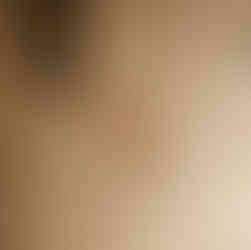Ion Thruster
- Darryl L
- Jan 9, 2024
- 3 min read
Updated: Jan 17, 2024
This basic ion thruster design works by ionizing nearby air molecules and moving said ions in a consistent direction due to the polarity of the two high-voltage electrodes.
The 1mm thick copper sheet pictured above was cut to shape with aviation snips. This became the positive electrode of the ion thruster. The edge of jagged teeth are essential for optimal electron capture due to charge accumulation on the tips of the spikes.
The positive copper electrode was rolled into a hollow cylinder, mounted atop a scrap plastic roll, and supported by hot glue chunks.
A generic wire was stripped and splayed open, then soldered to the inner and outer faces of the copper electrode. The other end of the wire--not pictured--was directly connected to the output leads of the 100kV transformer.

The quick-release pneumatic fitting pictured functioned as the negative electrode. Another generic stripped wire was looped and soldered around the steel fitting.

The negative electrode was mounted across the positive copper electrode in a similar fashion as pictured.
The thruster thrusts! The blue glow emitted is a result of the so-called "ionic wind" generated by the movement of the charged ions that collide with nearby air molecules; subsequently moving the air particles in the direction of ion movement, producing the ionic wind's thrust.
The minuscule amount of thrust is pictured in the well-lit video above. The thruster is blowing a piece of tissue, demonstrating the direction of thrust from the positive to negative electrode. The clearly small thrust-to-weight ratio of the ion thruster is far below that of conventional combustion rocket engines. As such, in the real world, ion thrusters are used for tasks like orientation and long-term repositioning of satellites and spacecraft. The relatively low acceleration that ion thrusters provide make it unsuitable for escaping earth's gravity, where conventional combustion rocket engines shine.

Upon completion of the miniature proof-of-concept above, I set out to construct a scaled-up version of the ion thruster. The perforated surface of this old trash can was perfect for the design I went for; it allowed for easy routing of the components and wiring, similar to that of a breadboard.
I first removed the bottom face of the trash can using the classic heated knife, producing a nicely perforated cylinder to work with. The razor-based flip knife I used was the perfect choice, given that the mutilated blade could be easily and cheaply replaced.
The underlying concept remained the same, but this time, the negative electrode would be relatively thick straws wrapped in aluminum foil for conductivity; while the positive electrode would be thin copper wire routed parallel to the straws.
The thin copper wire of the positive electrode is difficult to see in the photos above, but they are there. The high gauge of the copper wire lend it similar "sharp" properties as the spikes of the prior version's positive copper electrode, facilitating charge buildup.
As observed in the video above, the characteristic blue glow is not visible. However, sparking and hissing can be heard, indicating that the ionic wind is likely being generated, but at an extremely small amount.
As with the prior video, sparking and hissing can be heard, but no visible thrusting is occuring on the piece of tissue held in front of the negative aluminum electrode.
From what I observe, the relatively underpowered design could be due to two factors, the voltage of the 100kV transformer being inadequate to power a larger contraption, and/or the uneven surfaces of the crumpled aluminum wrapping the straws.
The transformer used in this design was the same transformer in the previous smaller design, so perhaps utilizing a higher voltage transformer in the next version would generate greater ionic wind.
The aluminum foil left the straws with a conductive but uneven surface, unlike the smooth machined surface of the prior version's steel pneumatic fitting negative electrode; this could be remedied in the future design by electroplating the straws, then sanding them down to produce the intended smooth conductive surface.
Until the next version! Keep checking back for updates...










































Comments